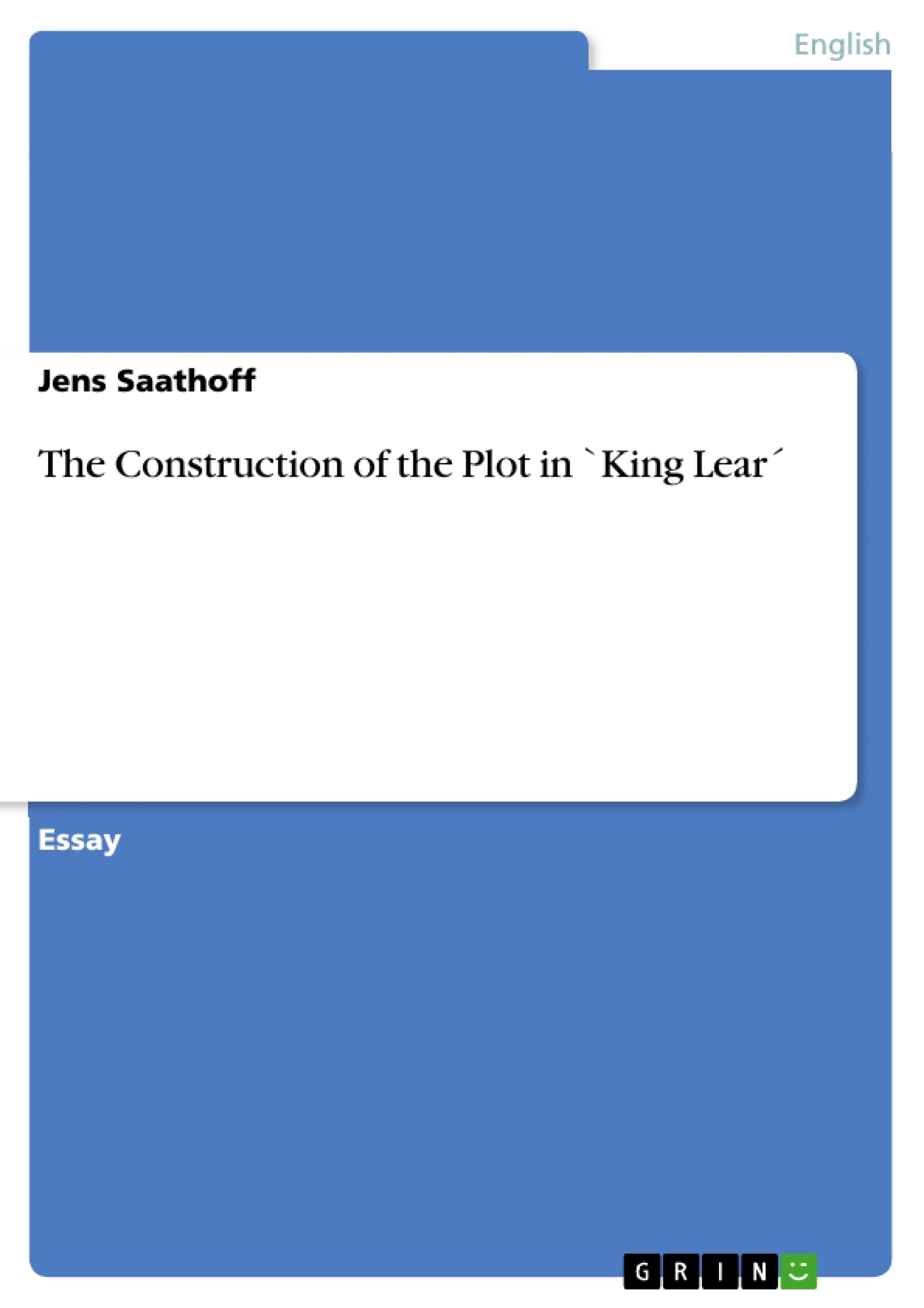This essay is about the construction of the plot in King Lear. Throughout the essay I will refer to the quarto text The History of King Lear.
As for the construction of the plot both form and content will be taken into consideration. Since a tragedy is normally characterized by the rise of a conflict that terminates in a catastrophe, I intend to deal especially with those aspects of form and content which relate to the conflict that is significant for King Lear.
With regard to this conflict several questions can be asked. First of all there is the question of what constitutes the conflict and which different forms this conflict takes. Furthermore we need to examine whether the structure of the play and the development of the conflict correspond with each other. Moreover I would like to point out some traits of the construction, such as the double-action, which seem to be special about King Lear.
Inhaltsverzeichnis (Table of Contents)
- Introduction
- The Exposition
- The Development of the Conflict
- Conclusion
Zielsetzung und Themenschwerpunkte (Objectives and Key Themes)
This essay analyzes the construction of the plot in Shakespeare's "King Lear", focusing on the interplay of form and content in shaping the play's central conflict. The essay aims to examine the relationship between the structure of the play and the development of the conflict, exploring how key elements of the plot, including the exposition and the turning point, contribute to the play's tragic trajectory.
- The role of the exposition in setting the stage for the conflict
- The nature and development of the conflict, both external and internal
- The interplay between Lear's decline and the rise of his daughters
- The significance of the turning point in the play
- The unique aspects of the plot construction in "King Lear"
Zusammenfassung der Kapitel (Chapter Summaries)
The introduction sets the context for the essay by outlining its focus on the plot construction in "King Lear" and its reliance on the quarto text of the play. The author emphasizes the importance of examining both form and content in analyzing the conflict and foreshadows the discussion of key elements like the double-action.
The chapter on the exposition discusses the traditional function of the exposition in setting the scene and introducing characters. However, it highlights the unique aspect of the exposition in a tragedy, which must also establish the seeds of the conflict. The author examines the first scene of "King Lear", identifying the elements that contribute to the development of the play's core conflict. This includes Lear's flawed decision to divide his kingdom, the introduction of the daughters' contrasting personalities, and Lear's own tyrannical nature. The chapter then moves on to discuss the second scene, which functions as a second exposition for the play's sub-plot, focusing on Edmund's evil plans and the seeds of the conflict within Gloucester's family.
The chapter on the development of the conflict explores the intricate relationship between Lear's mental decline and the outward conflict with his daughters. The author notes the unconventional nature of the play's construction, where Lear's decline is not interrupted by a moment of victory, unlike in other tragedies. The chapter discusses how the play's turning point is marked by the storm scene and how Lear's role becomes increasingly passive after this point. It examines the rise and fall of Gonoril, Regan, Cornwall, and Edmund, highlighting how their actions drive the plot forward.
Schlüsselwörter (Keywords)
The key themes and concepts explored in this essay include the construction of the plot, the exposition, the development of the conflict, the turning point, the tragic hero, the double-action, and the interplay of external and internal struggles. It analyzes the play "King Lear" through a formalist lens, focusing on the structure of the play and its relationship to the development of the conflict.
- Quote paper
- Dr. Jens Saathoff (Author), 1993, The Construction of the Plot in `King Lear´, Munich, GRIN Verlag, https://www.grin.com/document/181031




